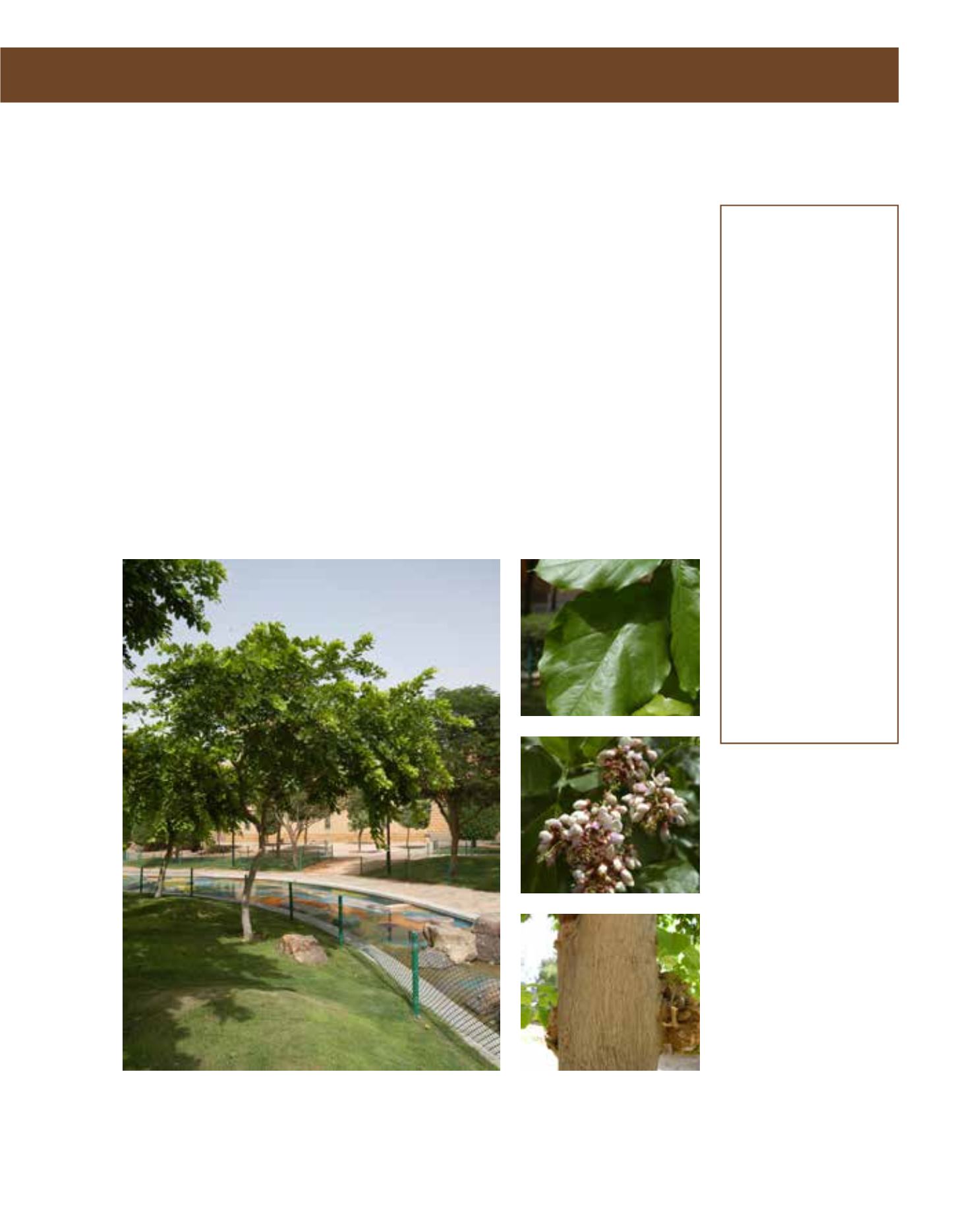

GENERAL
Origin
:
sub-tropical,
tropical
Humidity
:
semi-arid, semi-
humid, very
humid
Propagation :
sowing and
pricking out,
cuttings
Maintenance :
moderate
CONDITIONS
Urban climate :
resistant
Dessication :
vulnerable
Stagnant water :
resistant
Irrigation
:
high
Salinity/ppm :
very high (13000
ppm)
Hardiness
:
+3°C
SHAPE
Type
:
tree, shrub
Height
:
8 m-25 m
Spread
:
8 m-25 m
Foliage
:
semi-evergreen
FLOWER
Colour
:
pale pink
Size
:
15 cm
Period
:
May - August
Smell
:
scented, flower
FRUIT
Type of fruit :
pod
Fruit size
:
6 cm
Millettia pinnata (previously named Derris indica), commonly called Indian Beech, is a shrub or
tree of about 8 metres height, while it may reach 25 metres in its homelands from India to Thai-
land. It has been planted in many places in Arriyadh. The gnarled, fissured trunk bears a wide-
spreading crown with weeping branches. Young foliage is reddish at first, turning dark-green
with age. Leaves are dropped in early spring, but are replaced a few weeks later. They are arranged
alternately, pinnate and attract the eye with their shiny surface. Strongly fragrant flowers are
borne on drooping racemes. They appear in late spring and summer, either in white or pink with
a purple throat, and are followed by leathery, brown pods. Indian Beeches are absolutely resistant
to salinity and high alkalinity, since they occur naturally along seashores together with man-
groves, where they are used to water-logging. They also tolerate drought, together with shade and
full sun. Seedlings are not as tough, but once grown up, they also tolerate some frost and desert
heat. This tree seems to adapt to any condition, but looks best if planted in deep, well-drained soil
that retains some moisture or receives frequent irrigation. The tree propagates readily by its bean-
like seeds and plenty of root suckers. Pruning is required to lead the Indian Beech from a shrub
into a tree. It rejuvenates when pollarded or even coppiced. It is an ornamental tree for gardens,
parks and avenues, where it should be lined up at intervals of about 8 metres.
202
Millettia pinnata,
Fabaceae
Indian Beech
















